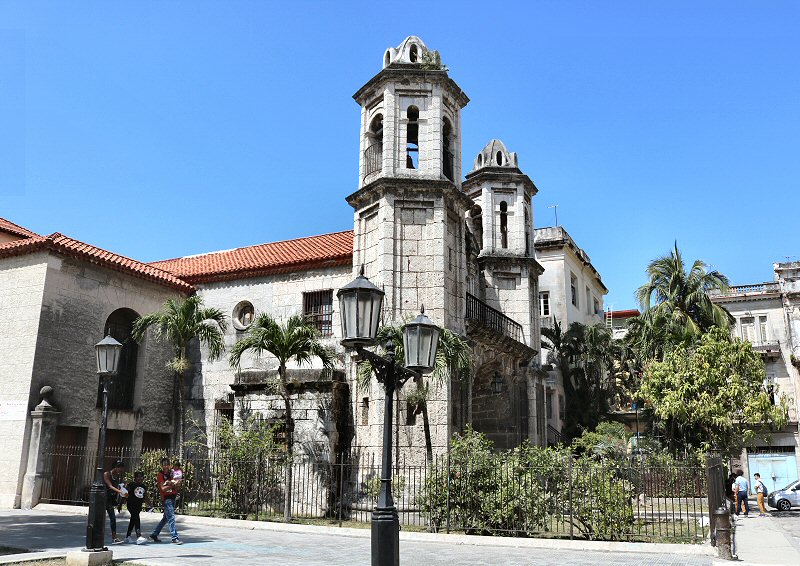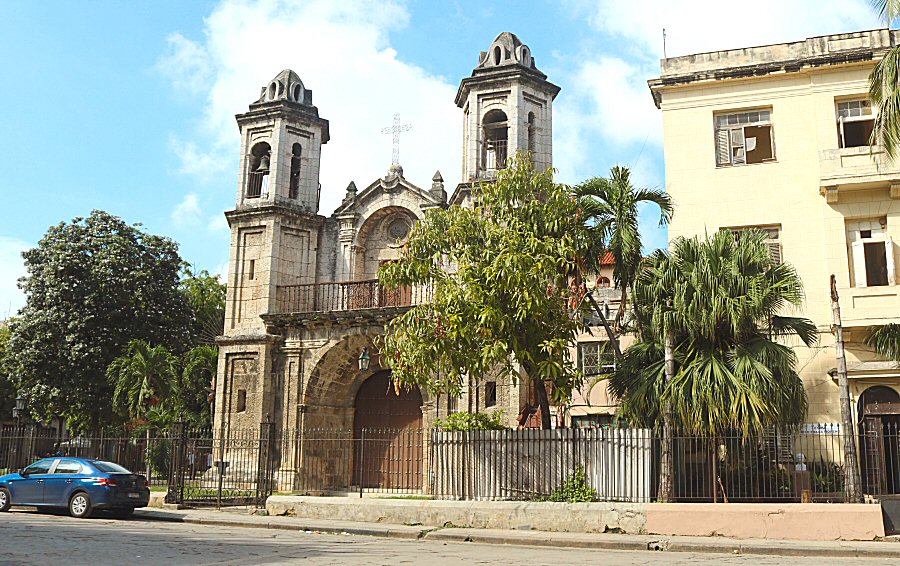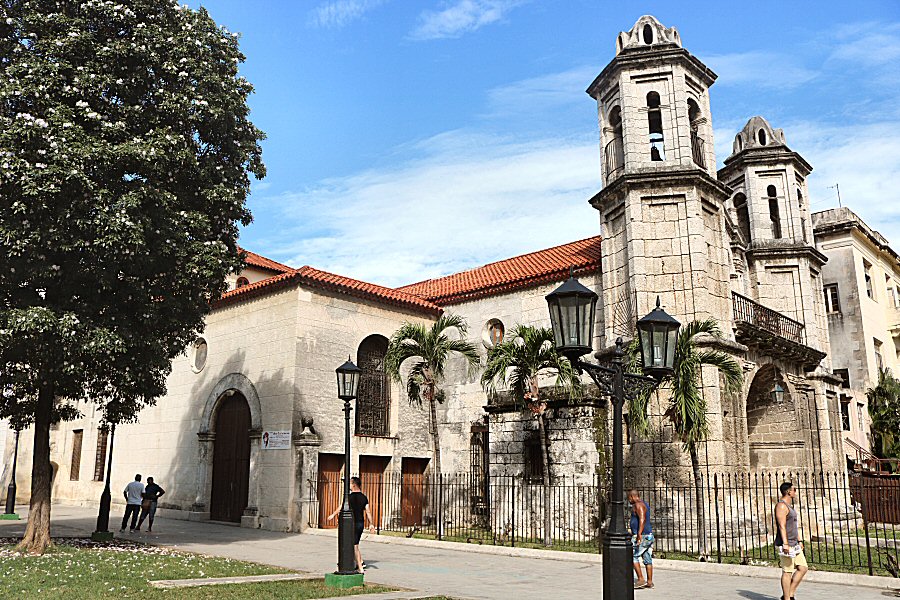
The Iglesia Del Santo Cristo Del
Buen Viaje was built by the Franciscan order as a simple
hermitage in 1640. The place was chosen by the Fransiscan
friars for its strategic location to perform the Via Crucis
(procession of the cross) that took place every year during
Lent and started from the Capilla de la Santa Veracruz of
the Basilica Menor de San Francisco de Asís, crossing the
city from east to west along the Amargura street and ending
in Plaza del Cristo. The hermitage took over the function of
the older hermitage, built in the neighborhood of Campache
in the previous century. The neighborhood of Campache was
composed of a tringle, formed by the Muralla and the San
Ignacio streets and the Avenue del Puerto, a preferred place
for the black horros (freed slaves). The hermitage was known
as the Ermita del Humilladero (Hermitage of the Humilladero,
Humilladero is the first name of the Amargura street, and
means devoted place with an image or with a cross on a
pedestal).
In 1640, when the hermitage was
built, it had only one rectangular nave, and its main façade
was oriented to the east. In 1693 it was reconstructed by
the bishop Diego Evelino de Compostela, so that it started
to serve as the auxiliary building of the parish church
Parroquial Mayor, and it was elevated to the rank of the
church in 1703, concurrently with the Iglesia del Santo
Ángel Custodio (Church of the Holly Guardian Angel).
In 1732 the old hermitage was
demolished and a greater chapel with some collaterals were
built on its place by the Bishop Lazo de la Vega. Even
though this date is accepted as the construction date of the
church, only a semicircular apse is all that remained from
this Baroque style building. The church gained its current
appearance during the time of the Bishop of the Catholic
Church Pedro Agustín Morell de Santa Cruz y de Lora
(1754-1768). In 1755 he added three chapels to the church
that was rebuilt with the current façade and the two huge
towers. It was dedicated to Nuestra Señora del Buen
Viaje (Our Lady of Good Voyage), because the square in front
of it, the Plaza del Cristo, was a preferred place by the
sailors that had a voyage from Spain to the Indies. With the
opening of the hermitage, it gained great popularity among
these sailors that were feeling the need of the protection
of the saints against the risks of the ocean.
In 1899 it was handed over to the
American Augustinians, along with the Iglesia del Santo
Ángel Custodio. They added an extensive building to the
church after it was restored throughly. The new building
that was constructed at the back of the church, was used as
the monastery, as well as the residence of the friars, but
more importantly, it housed a parochial school, the Escuela
San Agustín that was responsible for the primary and
secondary education. The friars of the Escuela San
Agustín established the University of Villanueva. The
Escuela San Agustín was nationalized in 1961. In 1932, upon
request of the Augustinian fathers, the church was extended
by the architects of Morales y Compañía, adding of a nave on
each side of the exisiting one.
The Church of Santo Cristo del Buen
Viaje is commonly used by the Kimbisa rule, one of the rules
of the Congo or Palo, to syncretize African religions with
those of Christian origin. The Kimbisa rule was created by
the Cuban mestizo Dolores Petit to bring the white
population of the Catholic faith closer to the set of
African rituals and liturgies of Palo Monte.
The Iglesia Del Santo Cristo Del
Buen Viaje, the highlight of the plaza, has a façade,
characterized by its simple design. There is not any
embossment on the stone walls, but the flared door, the
oculus (round window on the facade) and the huge towers are
charming. The cheerly-painted wood ceiling and the
stained-glass windows stand out.



